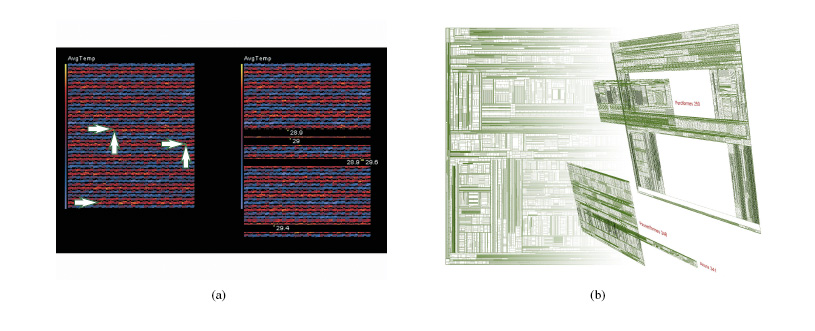Explode to Explain: Difference between revisions
No edit summary |
No edit summary |
||
| Line 1: | Line 1: | ||
== Authors == | == Authors == | ||
*[[ | *[[Luboschik%2C_Martin|Martin Luboschik]] <br/> | ||
*[[Schumann%2C_Heidrun|Heidrun Schumann]] <br/> | *[[Schumann%2C_Heidrun|Heidrun Schumann]] <br/> | ||
Revision as of 16:45, 7 May 2008
Authors
Short description
The basic problem behind this technique is, the complexity and sophistication of visualization techniques used to visualize constantly growing large data volumes and complex interrelationships. Traditional and easily self-explanatory techniques are not appropriate to visualize more complex interrelationships. On the other hand more complex visualization techniques are often very hard to understand for non expert people.
Exploded views are used widely in for example technical drawings. The idea is to show all details of a complicated construction by exploding the components and then showing the relationships of the components. Luboschik and Schumann (2007) propose the use of explosion for explaining the more complex information visualization technologies.
Figures

Figure 1. Exploded view of stepwise separation of recursion pattern.
In Figure 1. is explained the recursive pattern technique by using the explosion. All the steps of separation are shown from left to right and additional annotations are added to explain the semantic of recursion. One recursive pattern represents the data of one year, that is separated into its quarters, months and so on.

Figure 2. Exploded explanation of a treemap.
Treemap is exploded to a serie of pictures. It shows the view-dependent explosion intodepth and the superimposing of underlying hierarchy. This kind of ilustration is applicable to most implicit 2D-techniques.
Suitable Datatypes
Basically all kind of data presented in 2D- form can be illustrated.
